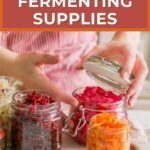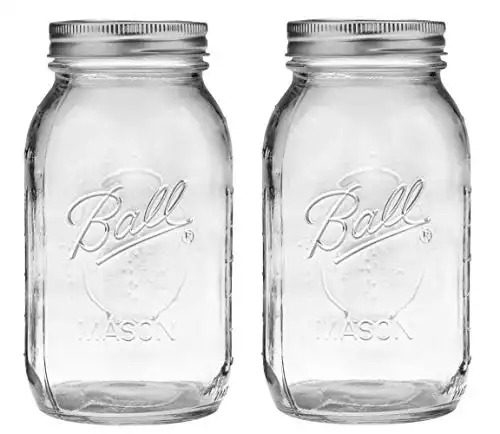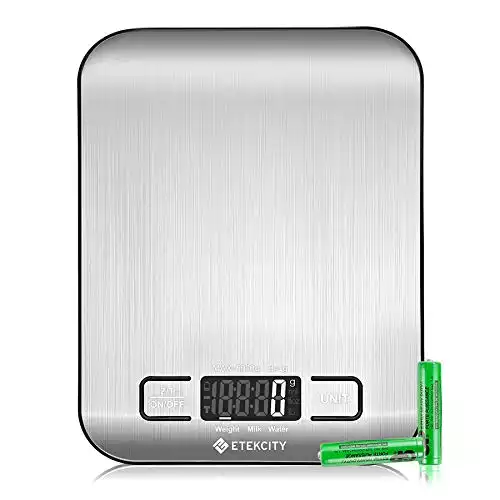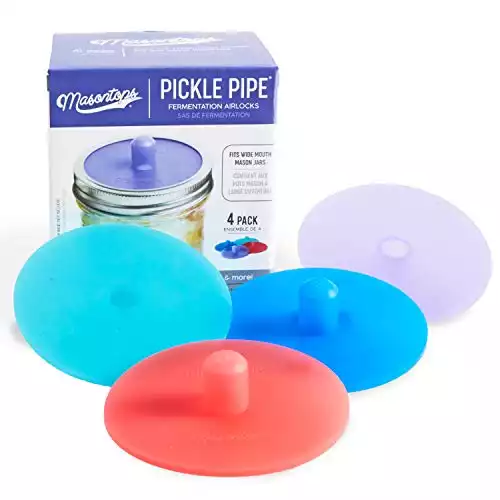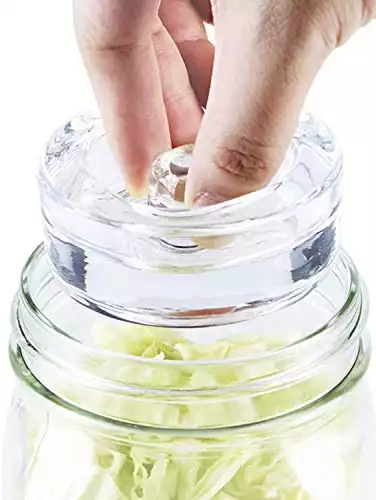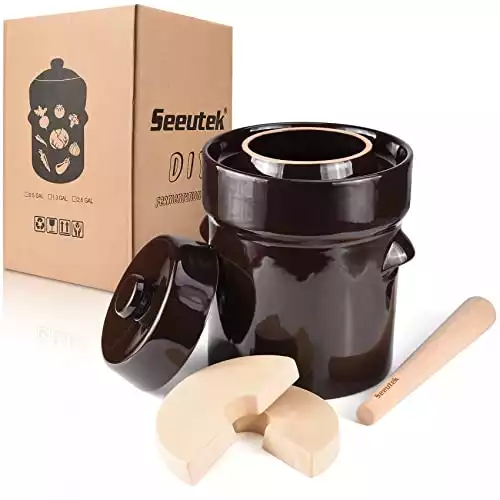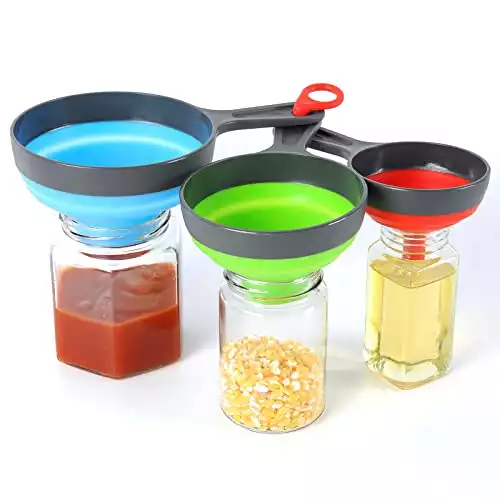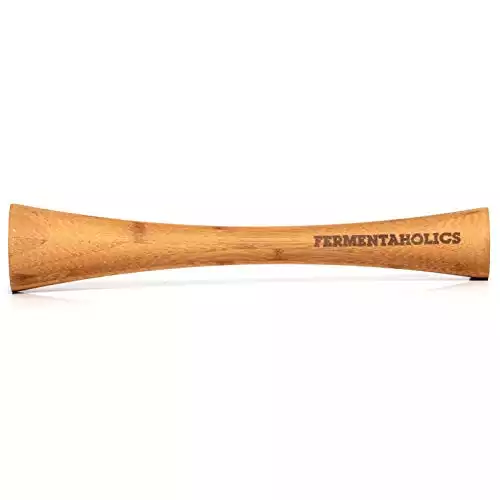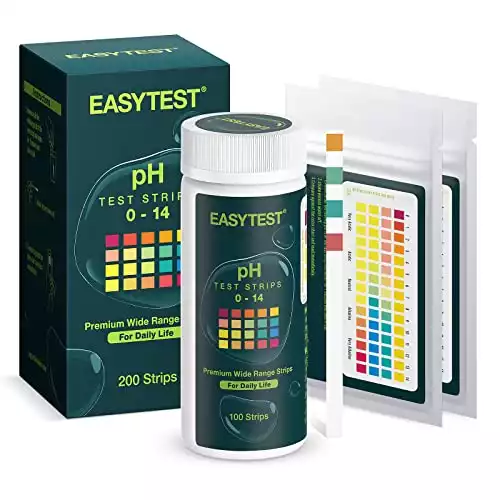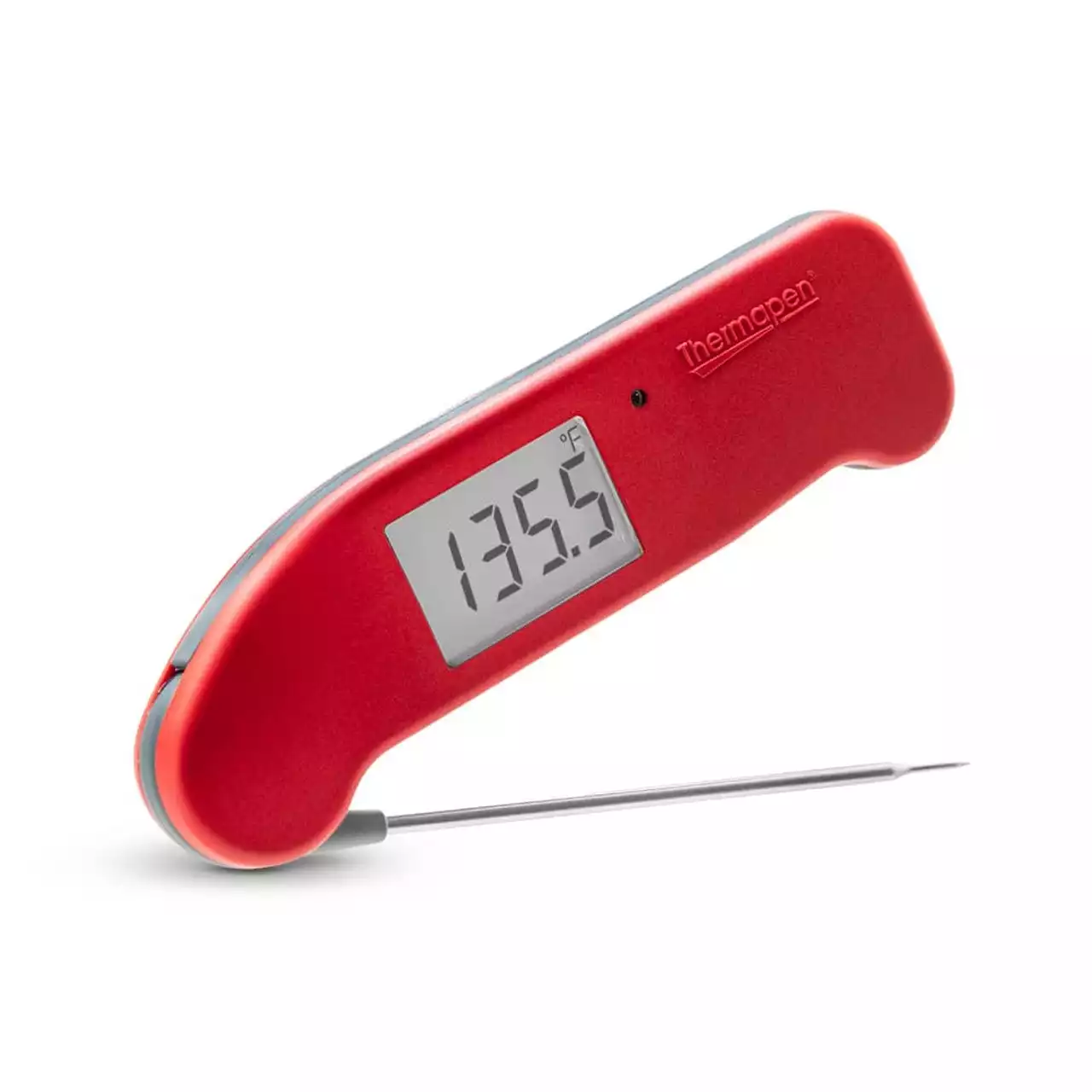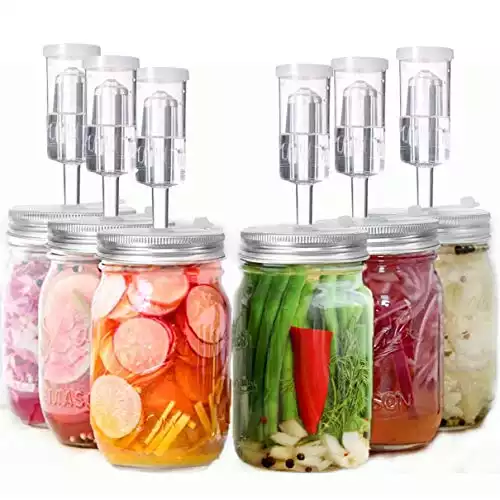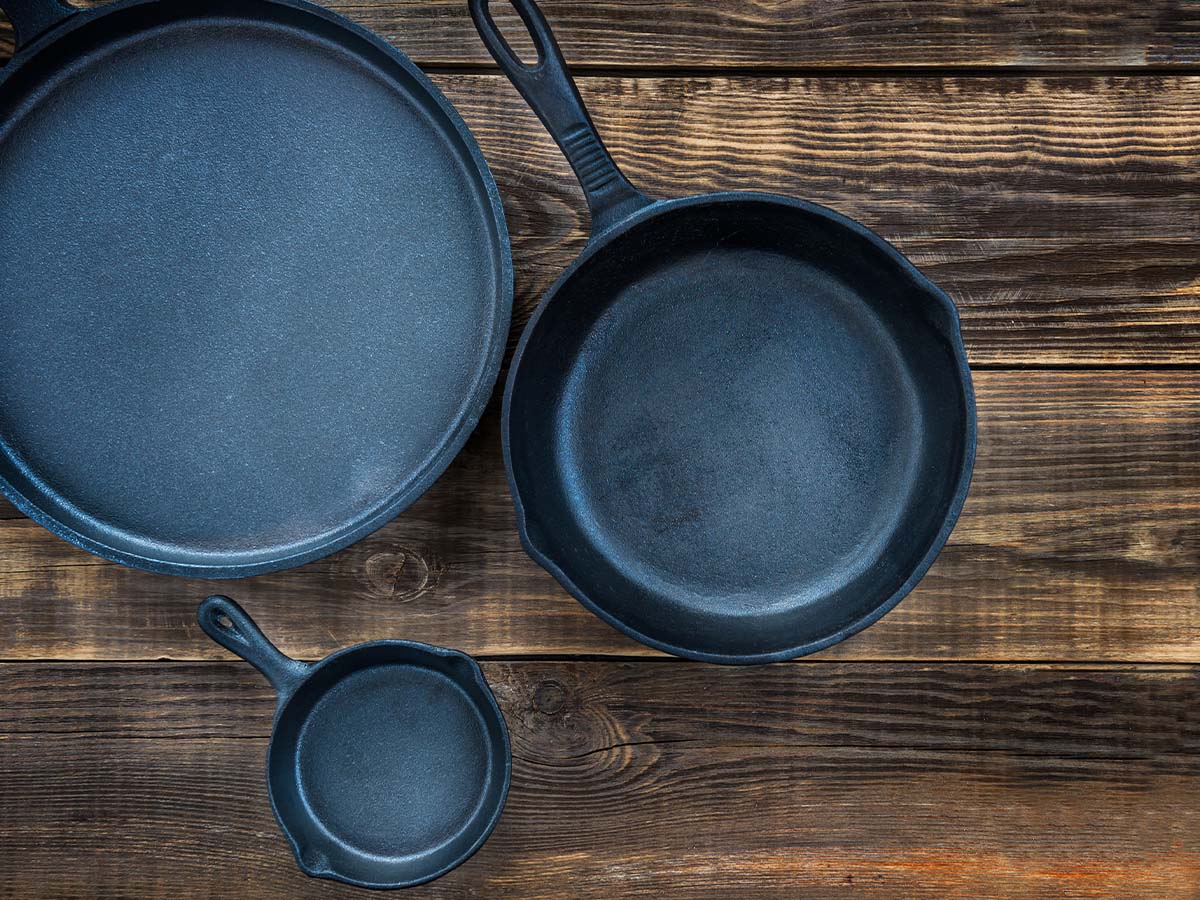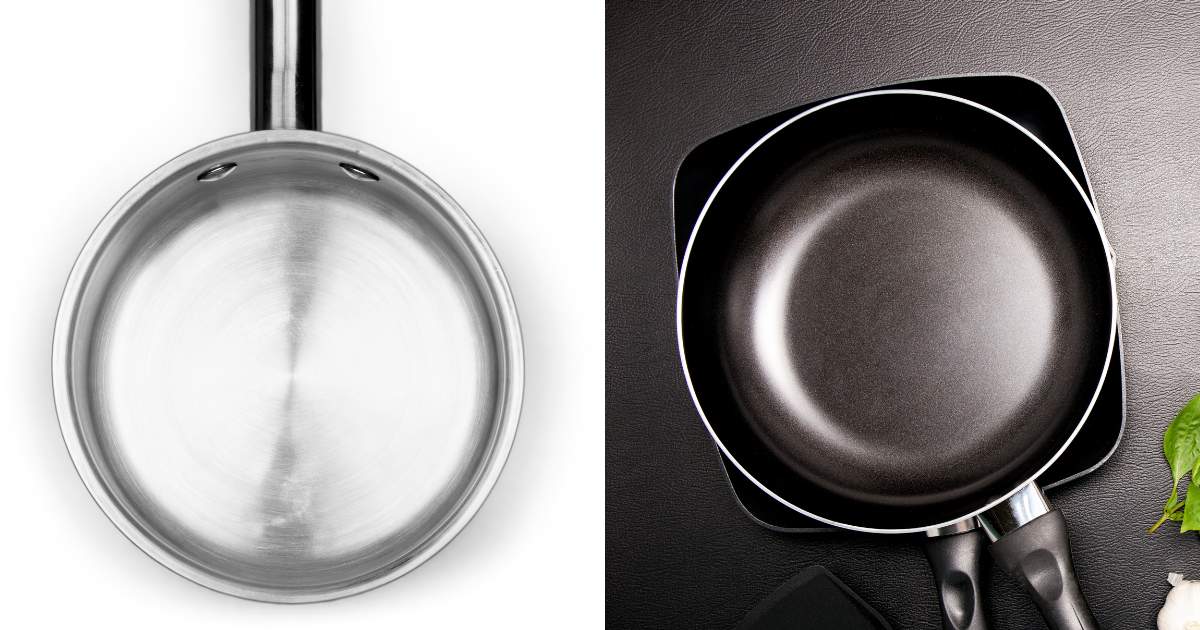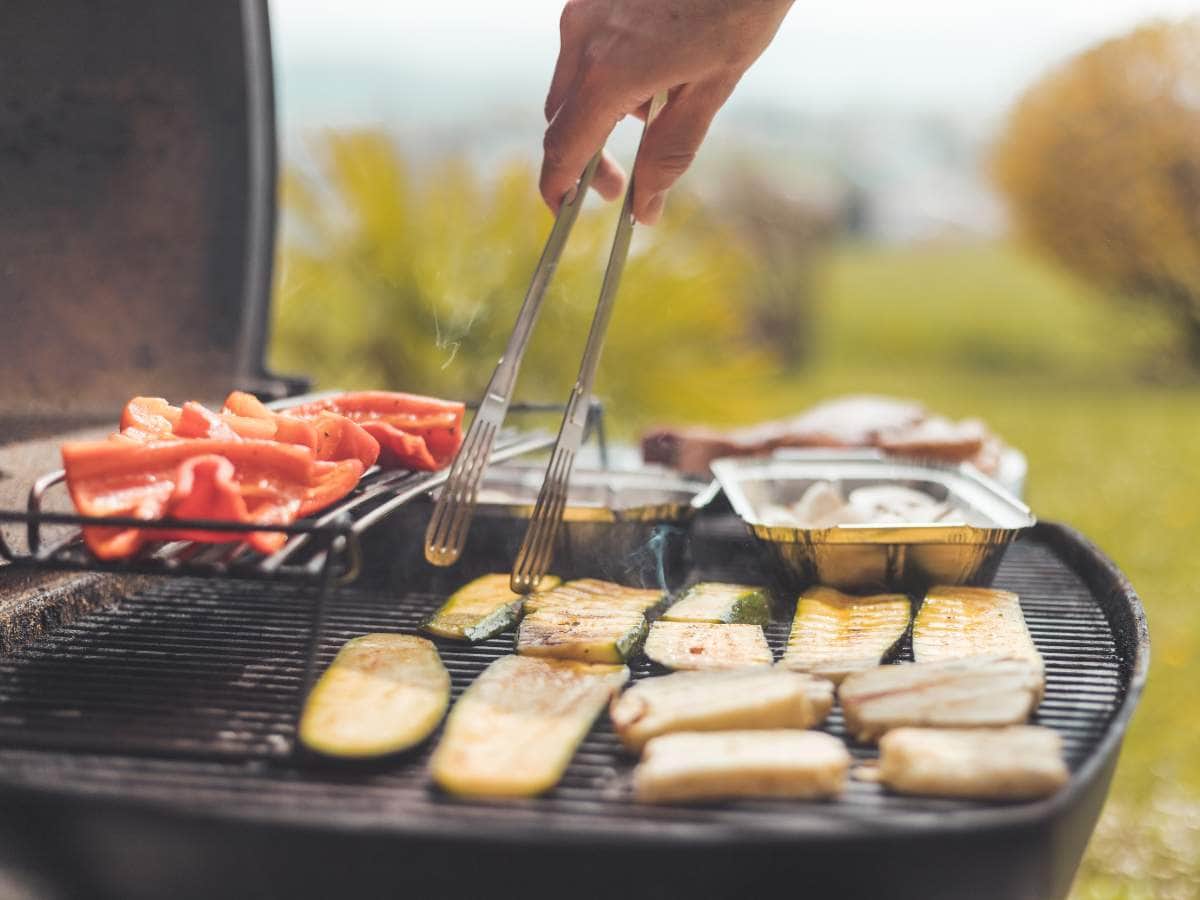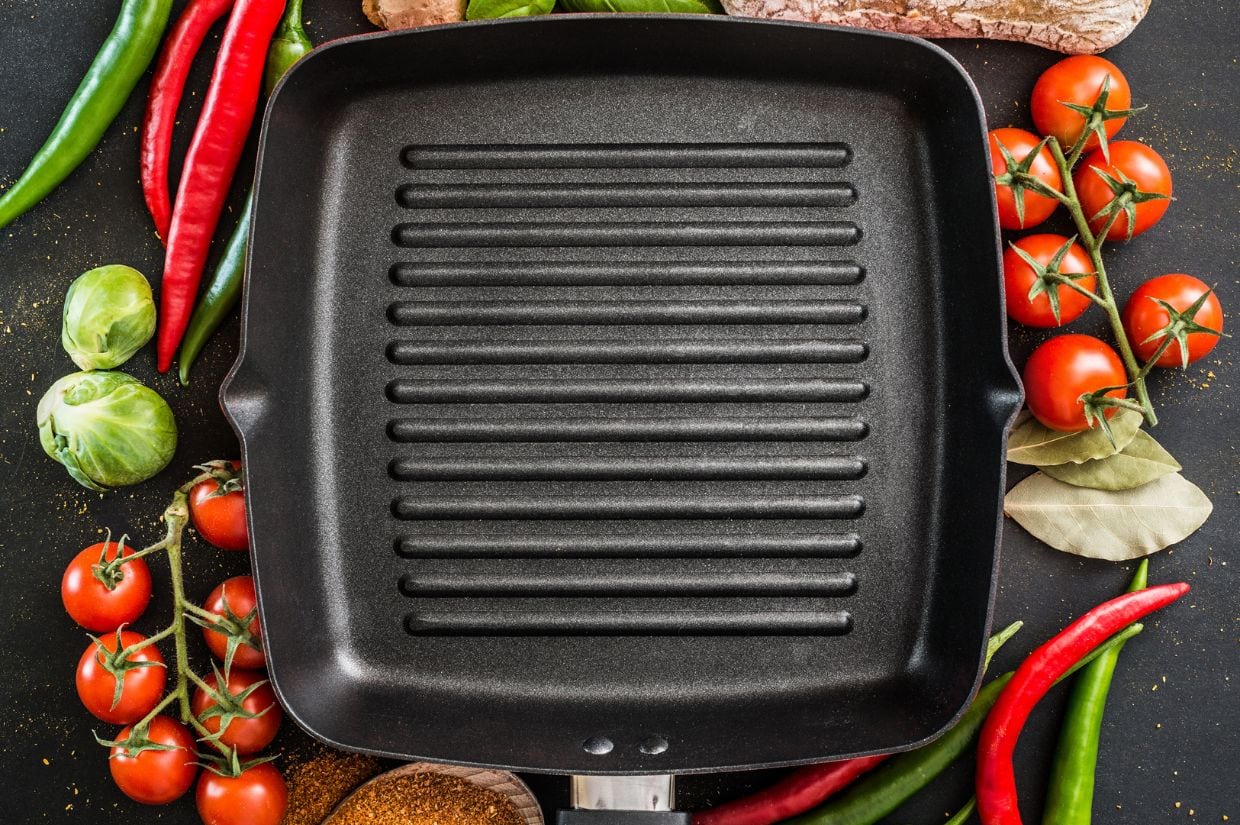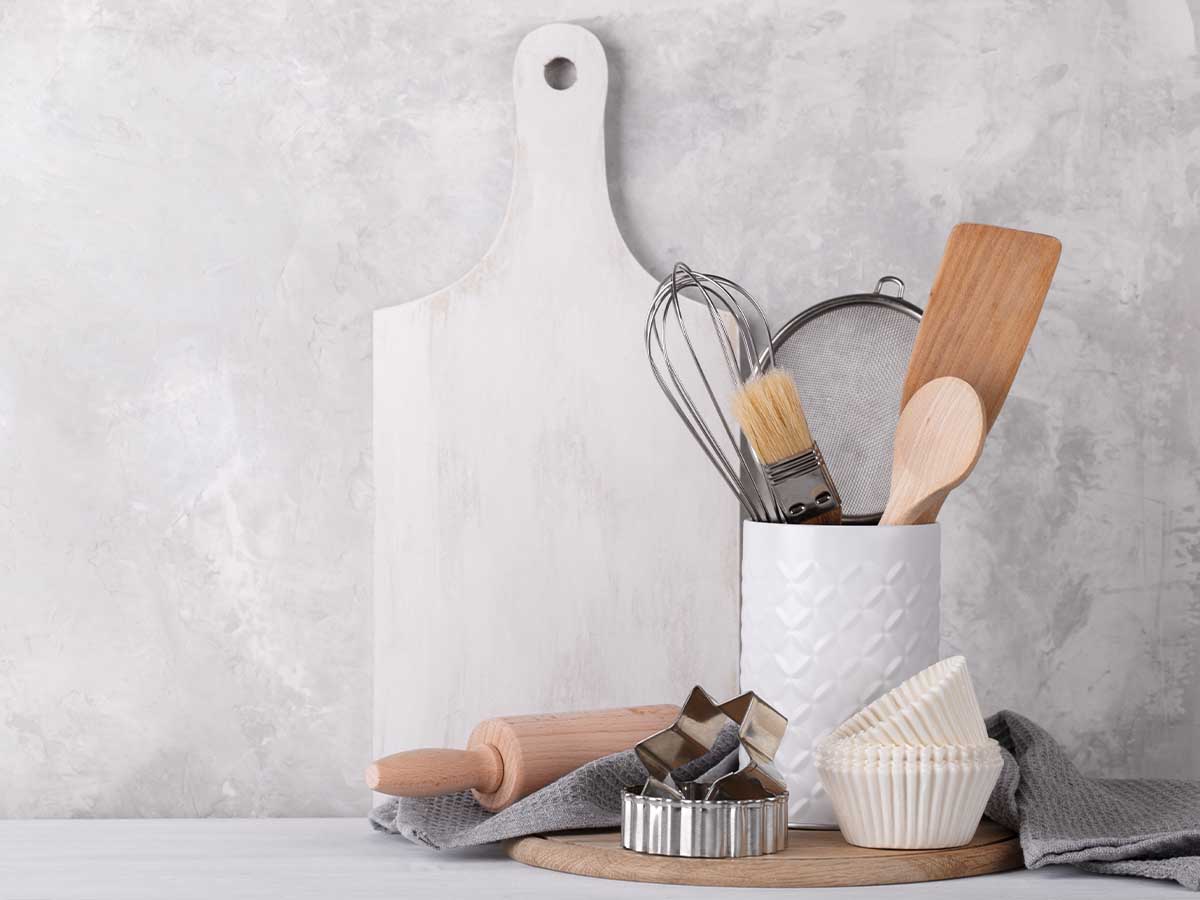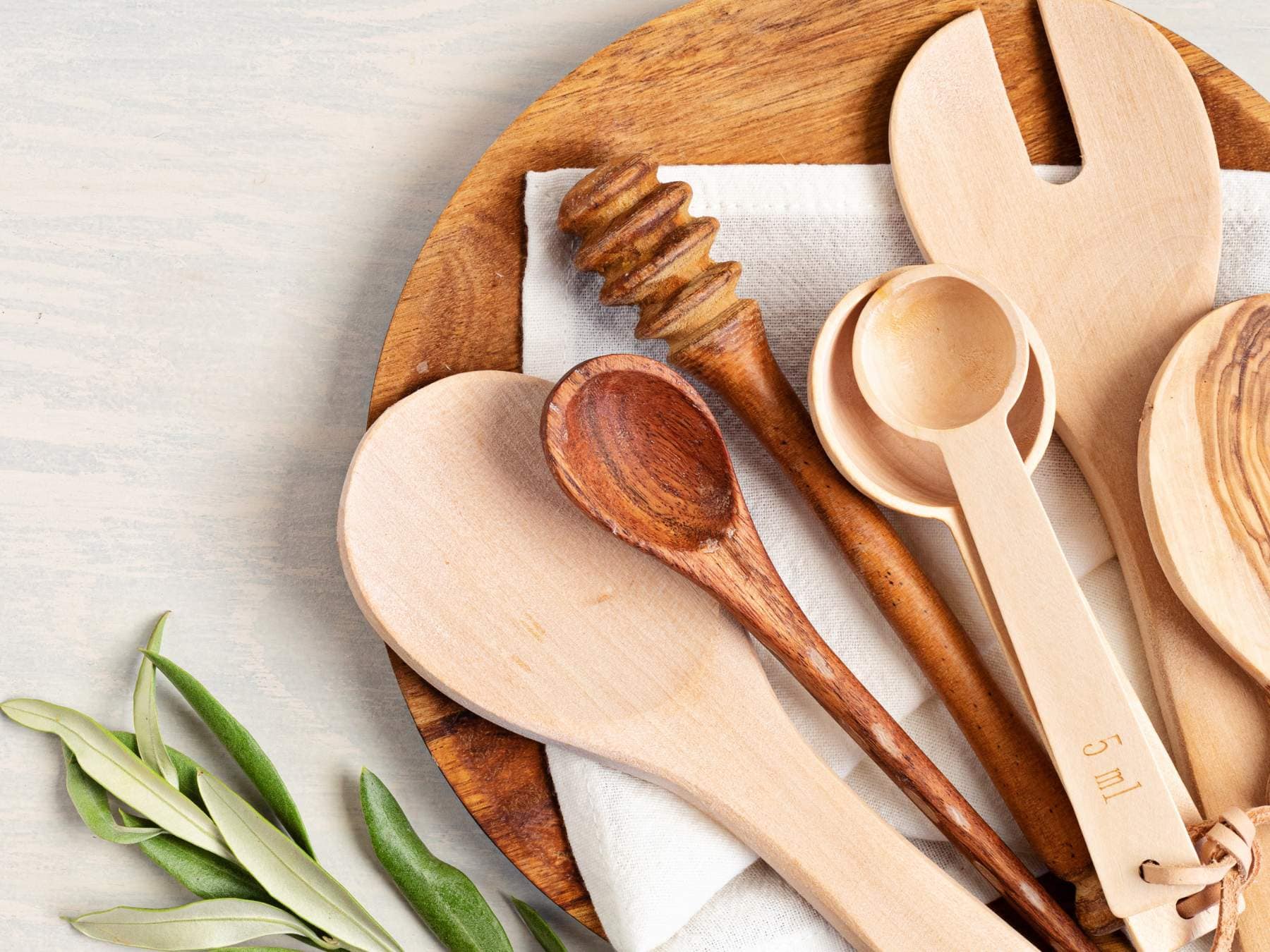Brine and Dine: Top 10 Must-Have Fermenting Supplies
Primal Edge Health participates in the Amazon Services LLC Associates Program and other affiliate programs and therefore, may collect a share of sales or other compensation from the links on this page. This comes at no additional cost to you, and all the prices and availability are accurate at the time of publishing.
Fermentation, a time-tested culinary art, offers numerous health benefits and impacts the flavor of food and beverages. And while our ancestors used very basic equipment, today, people interested in fermentation have various gadgets to make the job easier and safer.
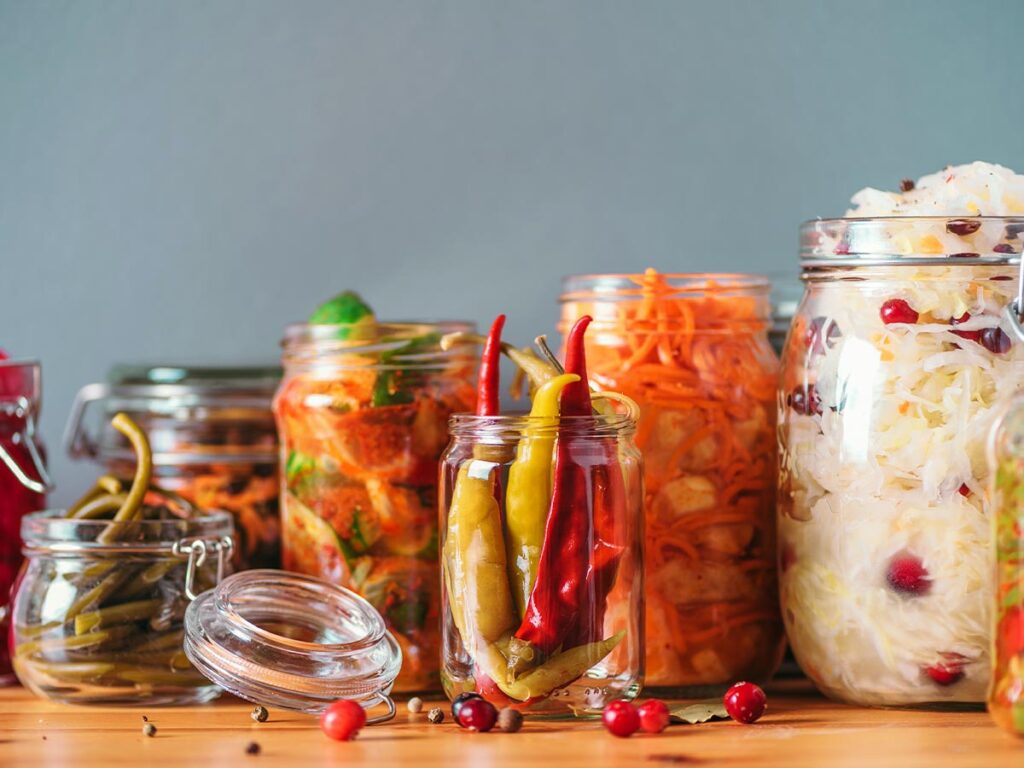
Natural probiotic foods are delicious and you don’t want to miss out on them! Use this curated list of top 10 fermenting supplies, tips and FAQs to prepare for your first fermentation adventures.
This post may contain affiliate link(s). As an Amazon Associate, I earn from qualifying purchases. See Disclosures.
Table of Contents (click to view)
Why Ferment Food
Fermenting food helps to boost its nutritional value while dissolving less digestible or desirable components. It can also reduce food prep time. Yogurt, pickles, kimchi and kombucha are examples of fermented foods.
Fermentation is also a great way to degrade antinutrients in some foods. For example, you can easily remove lectins from beans by fermenting them into sauces and pastes.
Top 10 fermenting supplies
Whether you plan to start fermenting vegetables, fruit or other things at home, improve your chances of success by choosing quality fermenting supplies. Here are 10 ideas, including tools, equipment and other supplies, to help make fermenting foods easier.
Wide-Mouth Glass Jars
If you’ve already tried your hand at water bath canning, you might already have a stash of mason jars. But if not, now is the time to get some.
Choose wide-mouth glass mason jars over regular mason jars for fermenting. These jars allow easy access to your ferment and provide enough space for the contents to expand during fermentation. This is especially true if you’re dealing with whole vegetables like fermented pickles, which involves fitting whole cucumbers in a jar.
Mason jars are indispensable in my kitchen because they are heavy-duty, reliable and versatile. From canning and fermenting to short-term food storage, making cold brew coffee and adding farmhouse vibes to my life, I consider these jars must-have equipment.
Kitchen Scales
Good scales help you to get more precise measurements and ratios of fruit or vegetable to pickling salt or liquids. They’re helpful for fermentation, food portioning and if you plan to start pickling.
This quality kitchen scale has a durable stainless steel construction which makes it a reliable and long-lasting companion. From tracking macros and portion sizes to achieving the exact ratios in intricate recipes, a scale is an essential tool for any home chef seeking precision.
Airlocks
Airlocks are devices used in fermenting to let gas escape while preventing air from entering the container, causing mold growth. They create an anaerobic environment, crucial for successful fermentation and preventing harmful bacteria growth.
Attach an airlock to your fermenting vessel, allowing carbon dioxide to exit during fermentation while keeping oxygen and contaminants out.
No burping, oozing, or mess with these lightweight silicon fermentation lids. I love the ease of use of this one-piece airlock system. Plus, the compact design makes storing in small spaces even more manageable.
Weights
Fermentation weights submerge your veggies under the brine, creating an anaerobic environment for lactic acid bacteria to work their magic.
Gone are the days of fussing over the water line and constantly pressing down the ingredients. These weights keep contents submerged in brine and have an easy-grip handle that simplifies insertion and removal, making the fermentation routine a breeze.
Fermenting Crock
A fermenting crock is a stoneware pot for fermenting vegetables and other foods. It provides an anaerobic environment that helps preserve food and develop flavors.
To use a fermenting crock, place your prepared vegetables inside, add a brine solution, weigh them down to submerge them, then cover them and let the fermentation process occur.
I love that this stoneware crock is entirely plastic-free and makes a safe environment for fermenting and pickling. Plus, this kit comes with stone weights and a tamper, so you don't need to look for those separately.
Canning Funnel
A canning funnel helps you pack your veggies into jars without making a mess. It’s handy when working with small-sized produce like berries or cherry tomatoes.
The collapsible design of these funnels makes storage a breeze, while the food-grade silicone ensures safety and durability. The wide mouth allows for spill-free pouring into jars, minimizing mess and maximizing efficiency while working with sauces or vegetables.
Vegetable Tamper or Crusher
A vegetable tamper, also known as a cabbage crusher or sauerkraut stomper, is a must-have in your fermenting arsenal. It helps pack down veggies, releasing those juicy juices needed for successful fermentation.
With its sturdy design and a flat end, this wooden tamper tool is the perfect companion for packing vegetables into jars, ensuring a tight and even fit while eliminating air pockets during fermentation. It's so much better than pressing by hand!
pH Test Strips
Monitoring pH levels is critical during fermentation because pH levels impact flavor and safety.
Use pH test strips to ensure acidity is high enough to keep harmful bacteria away while letting the good guys thrive.
These easy-to-read pH strips have multiple gradients to get a more accurate reading and take the guesswork out of the fermentation process, allowing me to adjust conditions for optimal flavor and preservation.
Thermometer
A good thermometer is essential to maintain the correct temperature throughout fermentation. Too hot or too cold can mess with bacterial growth and ruin your results.
The Thermapen® ONE, by Thermoworks, is my favorite kitchen tool. Whether I'm grilling, baking, roasting or fermenting, this tool ensures targeted precision. Its quick response time and user-friendly design make it an indispensable companion for consistently delicious and precisely prepared food.
- One-second readings
- Accurate within ± 0.5°F (± 0.3°C)
- America's Test Kitchen - Winner
- 5-year warranty
Fermentation Lids
Last but not least, fermentation lids. These specialized lids make it easy to create an anaerobic environment inside your jar and often come with built-in airlock systems.
Airlock lids create an ideal fermentation environment while also making it easy to monitor progress without constantly opening jars. By purchasing a kit that includes stainless steel lids, grommets, airlocks, and silicone rings, you can ensure a hassle-free experience and consistently produce delicious and successful results.
Tips for Fermenting Success
If you’re new to fermenting, start with a small-batch recipe.
Choose a simple dish like a classic sauerkraut or kimchi for your initial fermentation. Condiments like pickle relish are also quick, easy and delicious. These recipes require minimal ingredients and have straightforward processes.
Browse our collection of easy keto-friendly fermented foods for more ideas with vegetables, dairy, coconut, fruits and more.
Gather all your tools before you begin. This includes wide-mouth glass jars, airlocks, weights, a canning funnel and fermentation lids.
Next, choose fresh vegetables or fruits. Remember that fresher produce will yield better results.
Then follow your chosen recipe and directions.
Learning from Mistakes
As with most other new skills, fermenting takes time to master. You might encounter some bumps as you learn how to ferment foods at home.
Check each batch carefully, particularly when starting to ferment food.
If it smells peculiar, has changed color dramatically or if the jar lid has even popped off, it’s okay to toss it out and start again. Remember: safety first.
Consider these first fermenting experiences as learning opportunities rather than setbacks.
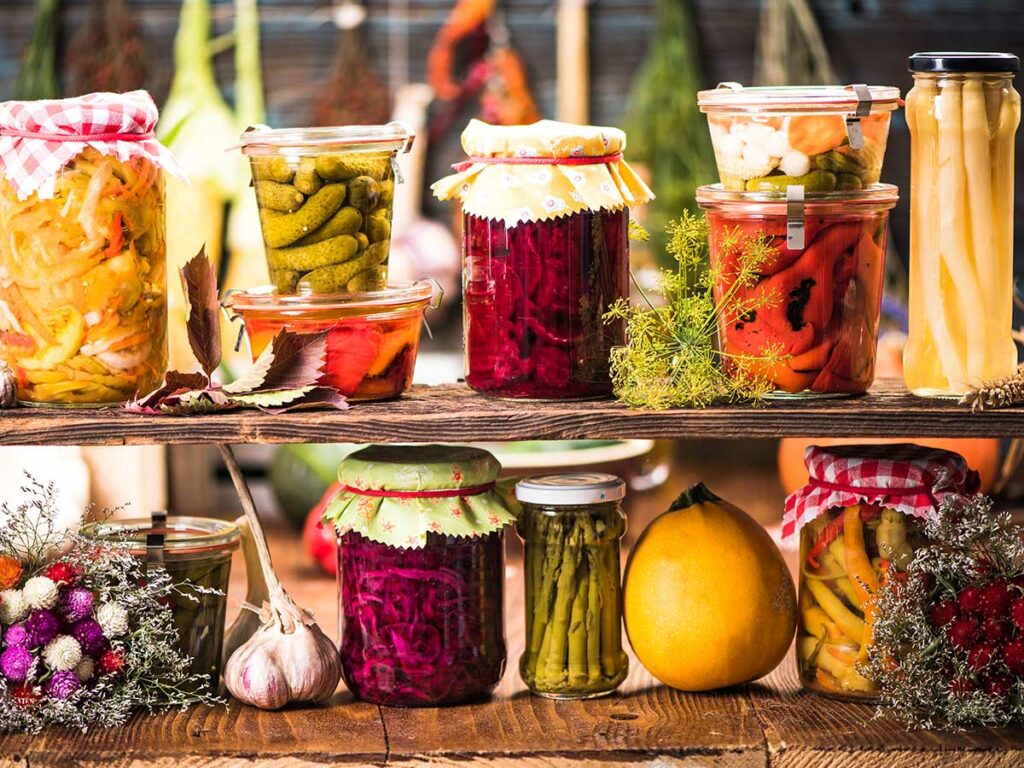
Fermenting Supplies FaQs
Here are some common questions about fermenting foods.
What’s so Great About Fermented Products?
Fermented products offer various health benefits, including naturally occurring probiotics to help improve digestion and boost immunity.
What Is the Best Material for Fermentation Supplies?
Glass jars work well for fermentation because glass is non-reactive and easy to clean. Stone crocks and food-grade plastics are other options for fermenting containers.
What Are the Four Types of Fermentation?
When it comes to fermenting food, there are four types of fermentation. They are:
- Alcoholic fermentation
- Lactic acid fermentation
- Acetic acid fermentation
- Butyric acid fermentation
Understanding the different fermenting processes at work in food and liquids can help you monitor their behavior and follow safe fermentation practices.
Get Set for Success with The Right Fermenting Supplies
The right fermenting supplies are crucial for a successful fermentation process. These include wide-mouth glass jars, airlocks, weights, canning funnels and fermentation lids.
These essential tools create the ideal environment for beneficial bacteria to thrive and produce delicious fermented foods.
Further enhance your fermenting experience with vegetable tampers, pH test strips and thermometers because precision is key to successful fermentation.
The world of fermenting may seem daunting, but armed with these tools and some patience, you’ll master this ancient food preservation method. Remember: practice makes perfect, so feel free to experiment until you find what works best for you.
This article originally appeared on Food Drink Life.

